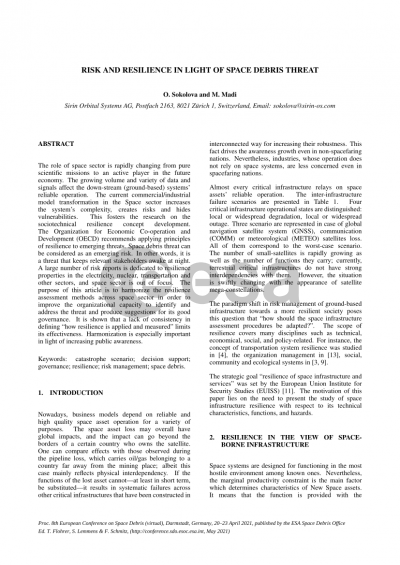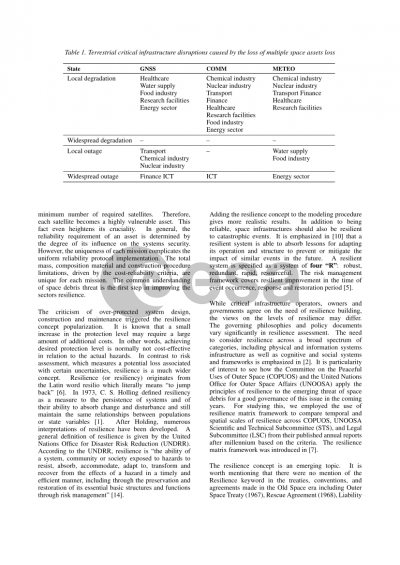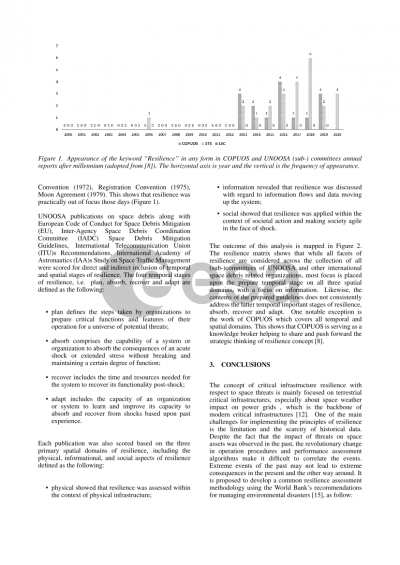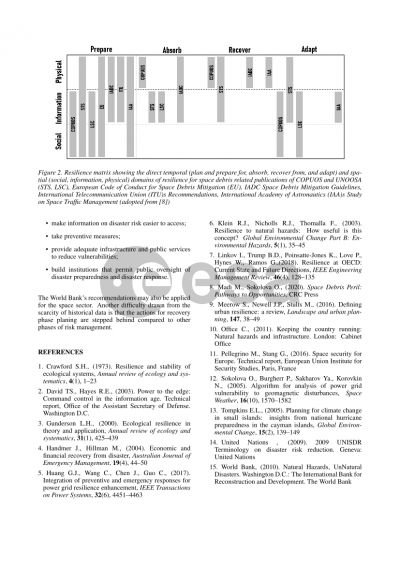Document details

Abstract
The role of space sector is rapidly changing from pure scientific missions to an active player in the future economy. The growing volume and variety of data and signals affect down-stream (ground-based) systems’ reliable operation. Though the Old Space era is predominantly considered as a resilient era, the thorough analysis shows that this assumption is not correct since it does not fulfil all the criteria of a resilient system such as self-reliance, overlap, diversity and ability to learn.
Risk assessment methods for terrestrial systems were traditionally based on vulnerabilities identification for a specific component to an adverse event followed by its functionality loss. The subsequent risk management was focused on hardening specific components to an acceptable risk level in order to prevent the overall system failure. Though higher risk levels were accepted in the space sector of the old era, methodology for risk assessment remained the same. The current commercial/industrial model transformation in the New Space sector increases the system’s complexity, creates risks and hides vulnerabilities. This fosters the research on sociotechnical resilience concept development.
The Organization for Economic Co-operation and Development (OECD) recommends applying principles of resilience to emerging threats. Space debris threat can be considered as an emerging risk. In other words, it is a threat that keeps relevant stakeholders awake at night. A large number of risk reports is dedicated to resilience properties in the electricity, nuclear, transportation and other sectors, and space sector is out of focus. The motivation and purpose of the proposed article is to harmonize the resilience assessment methods across space sector in order to improve the organizational capacity to identify and address the threat and produce suggestions for its good governance. It is shown that a lack of consistency in defining “how resilience is applied and measured” limits its effectiveness. Harmonization is especially important in light of increasing public awareness.
Preview





